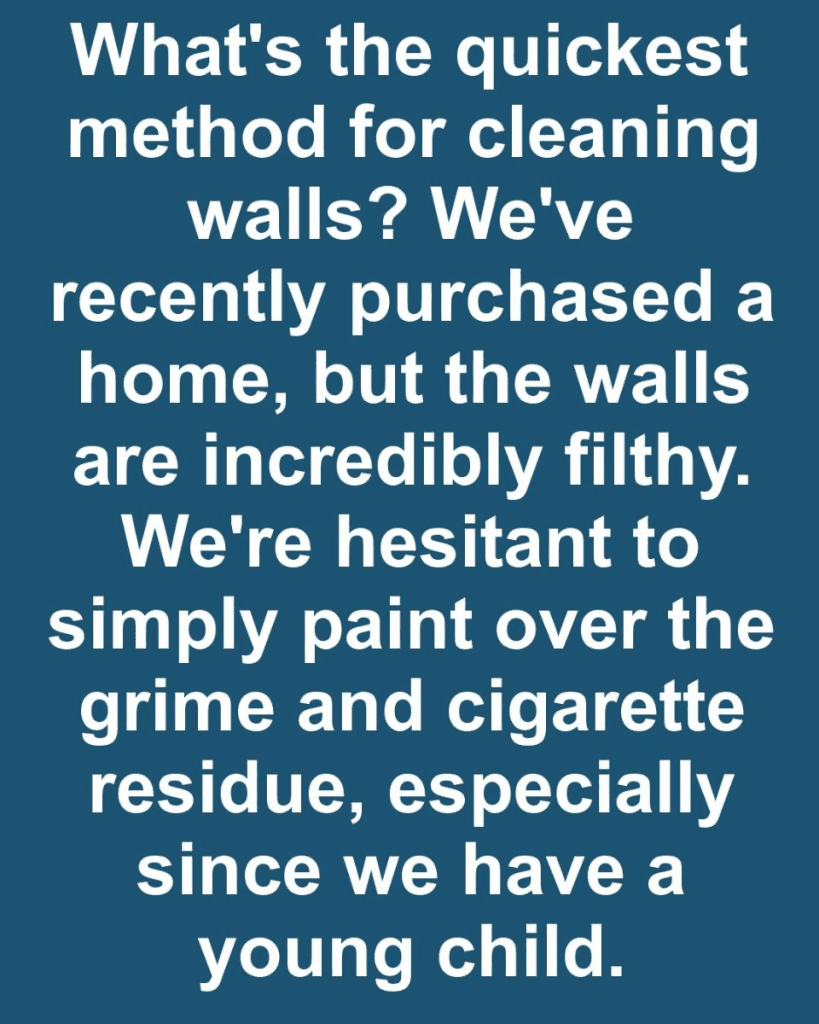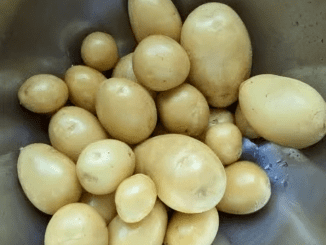Keeping walls clean is essential for a healthy, inviting home. While repainting may seem like an easy fix for dirty or stained walls, a thorough cleaning can significantly extend the life of your walls and improve your home’s air quality. This is particularly important for walls with cigarette residue, which can leave unsightly stains and persistent odors that affect everyone in the household. In this guide, we’ll walk through everything you need to know about assessing wall conditions, selecting the right cleaning supplies, and using effective methods to achieve spotless, fresh walls.

Assessing the Condition of Your Walls
Before diving into the cleaning process, it’s crucial to evaluate your walls’ current state. Are there visible stains, discoloration, or sticky residue? Cigarette smoke, for instance, can leave a distinctive yellow-brown film on walls, particularly noticeable around high-contact areas. Identifying the type and location of grime will help you determine the most effective cleaning approach and tools.
Spotting the Common Signs of Residue
Look closely for any of the following indicators:
- Discoloration: Yellowish or brownish hues are typical signs of smoke or grease residue.
- Sticky or Tacky Texture: Residues from smoke or cooking oils can create a sticky layer that’s harder to clean.
- Visible Mold or Mildew: Black or green spots may signal mold, which requires special care to remove safely.
Once you’ve identified the type and severity of staining, you can plan your cleaning strategy accordingly.
The Risks of Painting Over Dirty Walls
Painting over dirty walls may seem like a quick solution, but it can lead to a range of issues, such as peeling paint, uneven finishes, and lingering odors. Smoke and other residues can seep through paint layers, impacting both air quality and the visual appeal of the new paint. In homes with young children, unaddressed smoke or chemical residue poses an additional health risk. By thoroughly cleaning the walls first, you ensure a strong foundation for any future painting projects.
Why Clean Walls Create a Better Surface for Paint
Grime and residues prevent paint from adhering properly, which leads to peeling or bubbling as it dries. Additionally, if stains aren’t removed, they can resurface through even the thickest coats of paint. A clean wall will not only make paint last longer but also create a smoother, more polished finish.
Essential Supplies for Cleaning Walls Effectively
Before starting the cleaning process, gather essential supplies to ensure you’re equipped for all types of stains. Here’s what you’ll need:
- Microfiber Cloths and Sponges: These tools are gentle on walls and effective for wiping away grime without leaving streaks.
- Buckets for Rinsing and Cleaning Solutions: Having separate buckets for clean water and cleaning solutions will make the process more efficient.
- Protective Gloves: When working with chemicals like trisodium phosphate (TSP) or bleach, gloves will protect your skin.
- Long-Handled Mop or Extendable Cleaner: For hard-to-reach areas near the ceiling, a mop or extendable cleaner is ideal.
- Painter’s Tape and Drop Cloths: Use these to protect outlets, baseboards, and furniture from drips and spills.
Choose your cleaning agents based on the type of stains and wall material, ensuring you’re using safe and effective solutions for each situation.
Preparing the Room and Protecting Furniture
Proper preparation minimizes the risk of damage and makes cleaning more manageable. Start by removing furniture from the room, if possible, or covering it with plastic sheeting. Use painter’s tape to cover outlets, switches, and baseboards to keep them dry and protected.
Covering and Shielding for a Cleaner Process
Covering the floors with drop cloths or plastic sheeting protects against any drips or spills. This way, you can focus on cleaning the walls without worrying about potential messes or damage to your floors and furniture.
Choosing the Right Cleaning Agents for Different Types of Stains
Different types of stains call for specific cleaning agents. Here are the most effective solutions based on common wall stains:
- Cigarette Residue: TSP (trisodium phosphate) is highly effective for tackling tough smoke stains. Mix it according to package instructions and use it sparingly, as it’s a powerful cleaner.
- General Dirt and Grime: A solution of warm water and vinegar can remove everyday dirt without harsh chemicals. It’s safe for most painted walls and leaves a fresh scent.
- Mold and Mildew: Use a bleach solution (one part bleach to three parts water) to kill mold spores and prevent regrowth. Scrub gently with a sponge and ensure the area is well-ventilated during and after cleaning.
Always test a small, inconspicuous area before applying any cleaning solution broadly to ensure it won’t damage your wall’s paint or finish.
Step-by-Step Guide to Removing Cigarette Residue
Cigarette smoke residue can be stubborn, but with the right approach, you can restore your walls to their original color.
- Dust the Walls First: Use a microfiber cloth to remove loose particles that could create a muddy mess once wet.
- Mix the TSP Solution: Follow package instructions carefully, as TSP is a strong cleaner.
- Apply the Solution: Using a sponge, work in small sections from bottom to top to prevent streaking. Avoid letting the solution sit for too long on one spot.
- Rinse with Clean Water: After applying the TSP solution, rinse the walls thoroughly with clean water to remove any residue.
- Dry the Walls: Use a dry towel to blot and remove excess water, helping to prevent any streaks or water marks.
If there are still noticeable stains, repeat the process in the most affected areas until the wall looks clean.
Handling Stubborn Grime and Mold with Extra Care
Sometimes, regular cleaning methods may not be enough to tackle stubborn grime or mold. Here’s how to address these more persistent stains:
- Baking Soda Paste for Grime: Mix baking soda with water to form a thick paste, apply it to the stain, and let it sit for 10-15 minutes before scrubbing. This mild abrasive can help lift tough grime without damaging the paint.
- Bleach Solution for Mold: Mold can be a health hazard, so it’s essential to remove it effectively. Spray a bleach solution on the affected area, let it sit briefly, and then scrub. Always dry the area thoroughly to prevent mold from returning.
For extensive mold issues, consider hiring a professional to ensure it’s completely eradicated and doesn’t pose health risks.
Natural Cleaning Solutions for Homes with Children
In households with young children, safety is a priority, so natural cleaning solutions are a great choice. Here are a few effective, non-toxic options:
- Vinegar and Water Mix: A solution of equal parts vinegar and water is a powerful, natural cleaner that cuts through grime and is safe around kids.
- Baking Soda Scrub: Baking soda is non-toxic and gentle on walls. Sprinkle a small amount onto a damp sponge for light scrubbing on tough spots.
- Essential Oils for Freshness: Add a few drops of tea tree or lavender essential oil to your cleaning solution. These oils have antibacterial properties and leave a pleasant scent.
These natural methods are safer for kids and pets and can still be highly effective against common wall stains.
Ensuring Proper Ventilation and Thorough Drying
After cleaning, it’s essential to ventilate the room to remove any lingering odors and speed up drying time. Open windows, use fans, or place a dehumidifier in the room to enhance airflow.
Preventing Mold with Effective Drying
Proper drying also prevents mold from developing on damp walls. Wipe down walls with a dry cloth and allow air to circulate to ensure every surface is thoroughly dry before rearranging furniture or decorations.
When to Call in Professional Cleaning Services
If your walls are significantly stained or if cleaning feels overwhelming, professional services may be worth considering. Cleaning companies use industrial-grade equipment and solutions that can tackle deep-set stains efficiently. They also have experience in handling sensitive materials and can ensure that the cleaning process won’t harm your walls.
Assessing the Need for Professionals
Consider professionals if:
- Stains are Extensive or Persistent: Deep cigarette residue or mold issues may be more than household products can handle.
- You’re Concerned About Chemicals: Professionals know how to use strong cleaning agents safely and effectively.
- Time or Physical Limitations Prevent Thorough Cleaning: Cleaning can be labor-intensive, so hiring help may be practical if you have limited time or mobility.
Safety Precautions for Cleaning with Young Children Around
In homes with children, it’s crucial to prioritize safety by keeping cleaning supplies out of reach and ensuring proper ventilation during and after cleaning.
- Use Non-Toxic Cleaners: Opt for vinegar, baking soda, and essential oils over chemical-based solutions.
- Secure Cleaning Products Away: Store all cleaning agents safely out of reach, especially when not in use.
- Keep Children Out of the Cleaning Area: Ensure kids don’t touch or lean on freshly cleaned walls until they’re dry to prevent accidental contact with residue or moisture.
Taking these steps can help maintain a safe environment while achieving a clean, healthy home.
Conclusion: Sustaining Clean, Healthy Walls for the Long Term
Cleaning your walls regularly enhances the appearance of your home and contributes to a healthier living environment. By assessing wall conditions, using suitable cleaning agents, and following safe practices, you can keep your walls looking fresh and inviting. Regular spot cleaning, combined with an annual deep clean, will prevent grime and residue buildup, preserving your wall surfaces for years to come. With the right care, you’ll enjoy a cleaner, healthier home that supports the well-being of everyone who lives there.


